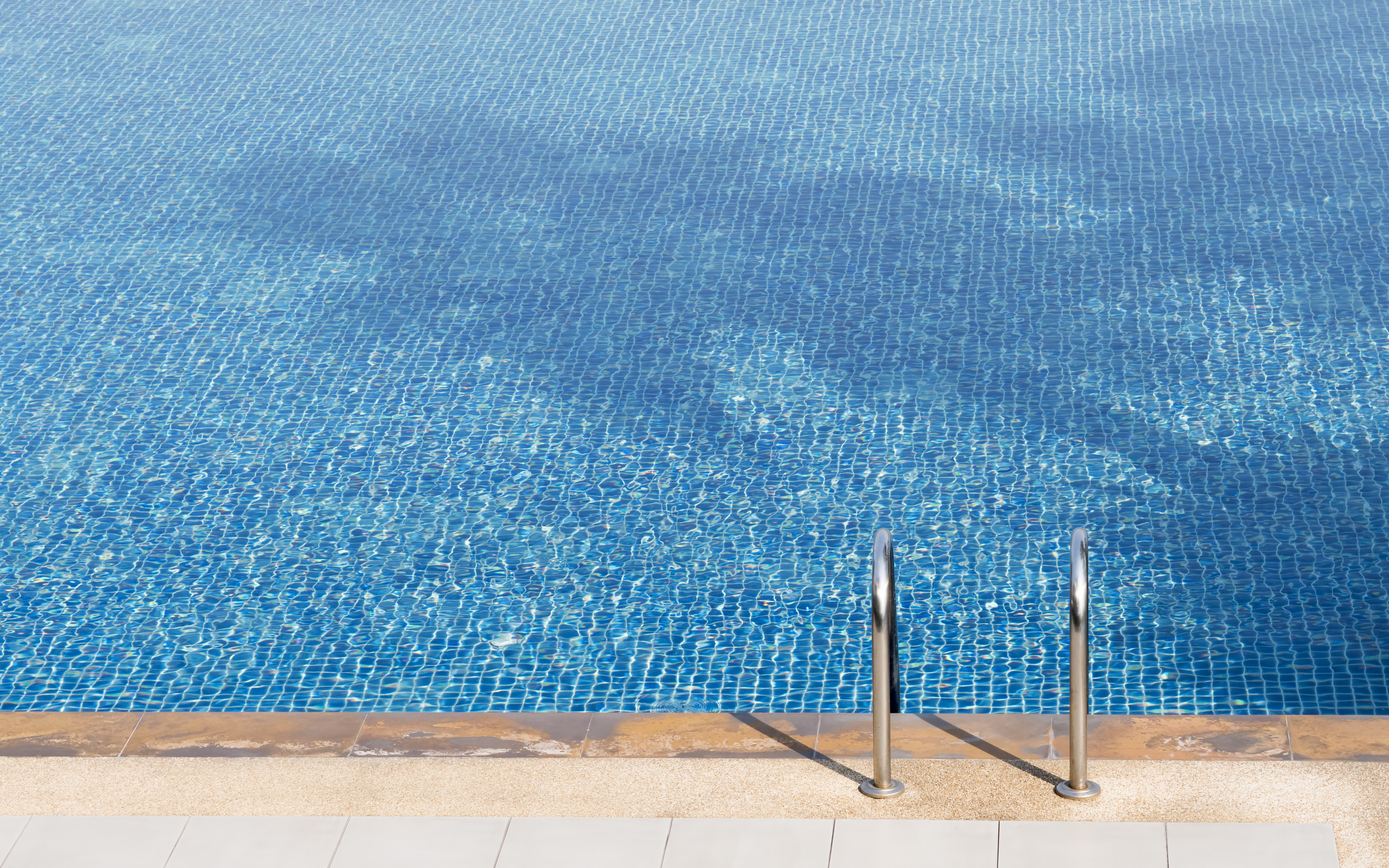
Here’s a sobering statistic: Nearly 400 children under the age of 15 drown in pools and spas every year — about one every day. Of those, 300 are under the age of 5. And 87 percent of those fatalities occur at residential pools and spas.
This is according to Ellyn Pollack, campaign leader for Pool Safely, a public education campaign run by the Consumer Product Safety Commission (CPSC) that works to reduce child drownings and other incidents in swimming pools and spas. “Drowning is the leading cause of unintentional death for 1- to 4-year-olds, and every one of them is preventable,” she says.
But it’s not just about knowing how to swim. Some of those incidents involve a capable swimmer who’s become entrapped by a pool drain. What’s more, there have been about 60 deaths from electrocutions and 50 serious shocks in and around swimming pools since 1990, according to the CPSC.
The best way to prevent accidents is to implement multiple layers of protection: adult supervision, safety barriers, door and pool alarms, regular inspections, and training like swim lessons and CPR. If you own a pool or spa, or are thinking of building one, here’s what you can do to keep your kids — or your relative’s or neighbor’s kids — safe.
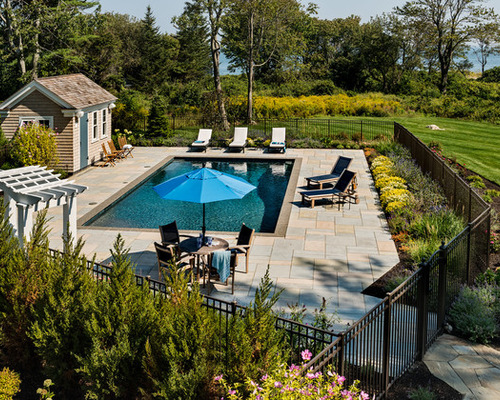
Teach kids to swim
We often think of swimming as good exercise for children or a fun way to pass the summer. But the real benefit is that it can save their lives. Kids who don’t know how to swim have a 70 percent higher chance of drowning, Pollack says. “Also, it’s important that if a child is missing, the pool or spa is the first place to check,” she says.
Designate a water watcher
No safety measure should be considered a replacement for adult supervision. Pollack recommends that people designate one adult to be solely responsible for watching kids in swimming pools and spas. “Not someone who is texting or reading,” she says. You can order a free water watcher badge and lanyard through the Pool Safely website. “Give an adult the badge and have them work in 15- or 30-minute shifts, then pass it along to another adult,” she says.
Also know that drowning is not like in the movies. “There’s no splashing and calling for help,” Pollack says. “Kids go down quickly and silently.”
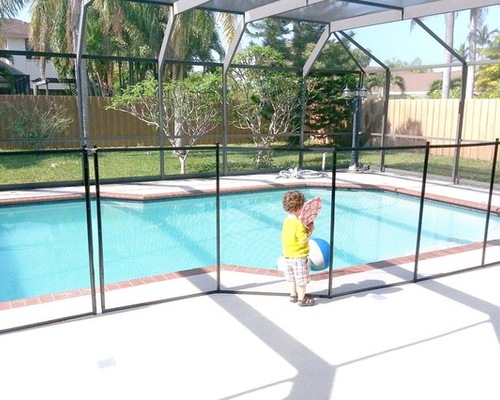
Implement barriers and other safety measures
Even if you don’t have kids, it’s recommended, and in many jurisdictions required, that you still provide some sort of barrier around your pool, whether it’s a fence or safety net. You never know when your friends might bring their kids over to swim or a neighborhood kid decides to wander over to check out your pool.
Fences
Removable fences are the most common safety barrier for swimming pools, says Reed Hauge of All-Safe Pool Fence & Covers. Fences come in a variety of styles and materials, but they should be at least 4 feet high (5 feet is better) and nonclimbable; the gate should be self-closing and self-latching, and it should swing away from the pool so that kids aren’t able to push it open if it fails to latch.
Fences should be see-through, such as chain-link, wrought iron or glass, and they shouldn’t have any footholds or niches that kids can use to climb over.
READ MORE: Find a local fencing and gate professional
Jackie Barrera is with D&D Technologies, a company that makes magnetic safety gate latches and gate alarms for pools. The company was one of the founding fathers, so to speak, of the National Drowning Prevention Alliance, which works with Pool Safely and other outreach programs to spread awareness on pool safety measures.
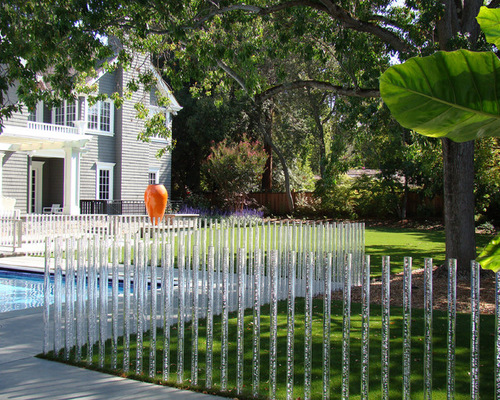
Barrera says that, because every state and local jurisdiction has different regulations, if any, on pool safety for things like barriers, the responsibility often falls on the homeowner to be educated on what can and should be done to keep kids safe around pools, and to make sure that the products they’re buying are in line with regulations. “I think it’s a reality, and we see a lot of news where homeowners are prosecuted because a neighborhood kid drowns in their pool and they didn’t know what the pool codes were,” she says.
For more on height regulations and other key measurements for constructing safe fences and barriers, check out the Pool Safely website.
Pros: Fences don’t need to be taken down to use your pool and put back up after you’re done. Once they’re up, you just walk through the gate. Installation usually takes only one day.
Cons: They can cut into valuable space in yards and pool decks. “Fences work better for large back yards,” Hauge says. Some people find them aesthetically unpleasing because they can block views to surrounding landscaping.
Cost: Fences cost $1,500 to $2,500, depending on size and material.
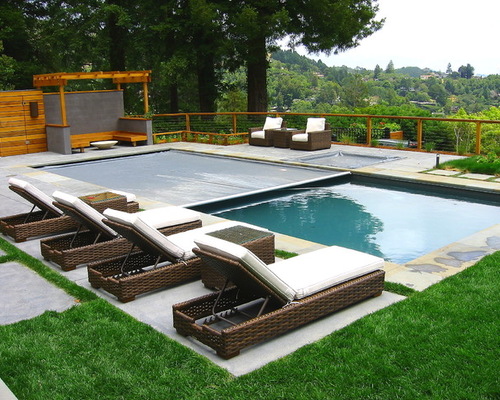
Safety nets and mesh covers
These have come into use in the past 15 years or so, Hauge says, and work by securing a net or mesh cover to anchors around your pool. They require a little time to put on and take off, so they’re better for people who use their pool or spa less often.
Pros: Installation takes only a day. Some people find them a bit more aesthetically pleasing than fences because they visually impact the surrounding landscape less, though they do obscure the views of the water.
Cons: Nets and mesh covers are a bit physically demanding since it takes about 10 to 15 minutes to fasten a net over a pool, which entails walking around the pool’s perimeter and bending down 40 to 50 times to clip a portion of the net into anchors that have been drilled into the hardscaping material.
Hauge says that he’s often asked what the safest option is. “There is no good answer to that,” he says. “They all have pros and cons. Safety nets — you can’t get over it, under it or through it, so it’s the safest option. But if it isn’t on the pool, it offers no protection.”
Cost: Nets are $1,500 to $2,500, depending on size; mesh covers are $2,500 to $4,500.
Automatic pool covers
“Automatic pool covers are the easiest to use but the most expensive,” Hauge says. These covers are designed and built to the specific dimensions of your pool, and operate by the touch of a button.
Pros: They’re the easiest to use. Just press a button, and the cover opens or closes.
Cons: They are expensive and take four to six weeks to manufacture, though installation is usually done in just one day.
Cost: Automatic covers are $6,000 and up, depending on size, configuration and features.
Door alarms
It’s recommended that even if you have a fence, safety net or automatic cover, you should still get an alarm for any door leading to your pool area. This is especially important if your house acts as the fourth side to the barrier surrounding your pool.
These alarms should have a distinct sound, Pollack says, that’s different from other door alarms in your home, the doorbell or telephone. That way, you’ll know immediately when the pool door has been opened.
READ MORE: Be inspired by these kids' spaces
Also, don’t forget about pet doors. Curious kids can easily slip through the openings, and some local jurisdictions require that doors leading to pool areas not have pet doors.
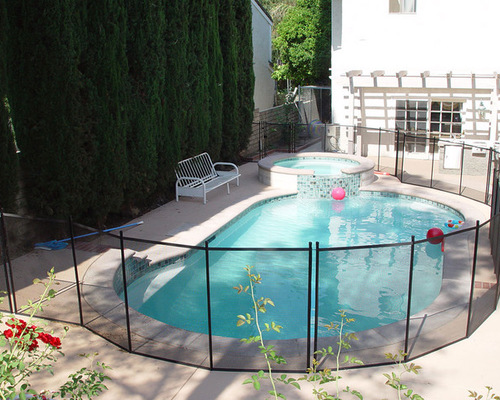
Pool alarms
Another type of alarm is the pool alarm. These detect waves or movement in the water so you know when something — or someone, rather — has fallen in.
Update pool drain covers
Drain entrapment and electrical shorts are also serious concerns.
The Pool Safely campaign was established as part of the Virginia Graeme Baker Pool and Safety Act (VGB), named for the 7-year-old daughter of Nancy and James Baker IV, the son of former Secretary of State James Baker III. Virginia Graeme drowned after becoming stuck in a hot tub drain, despite being a member of her community swim and diving team. Nancy Baker was unable to pull her daughter from the drain. Two men eventually pulled her off the drain, braking the drain in the process, but it was too late.
After that, Baker advocated for pool and spa safety, and eventually lobbied Congress to pass a law requiring anti-entrapment drain covers and other safety devices.
READ MORE: How to childproof your home — expert advice
If you move into a home with a pool or are installing one, it’s important that you check to make sure that the drains are anti-entrapment and compliant with VGB. These are mandatory in public pools, and some local jurisdictions also make them mandatory in residential pools, though regulation occurs at the local level, Pollack says. In other words, there’s a chance that your pool drains — even if they’re new — aren’t compliant with VGB.
If they aren’t, replacing them isn’t too expensive, and you don’t even have to drain the pool. “Suction from drains can be strong enough to hold an adult underwater,” Pollack says. “So it’s a nominal investment that can save a life.”
She also recommends inspecting drain covers regularly to make sure that they aren’t broken or missing. And it’s worth educating kids to not swim near them or play with them.
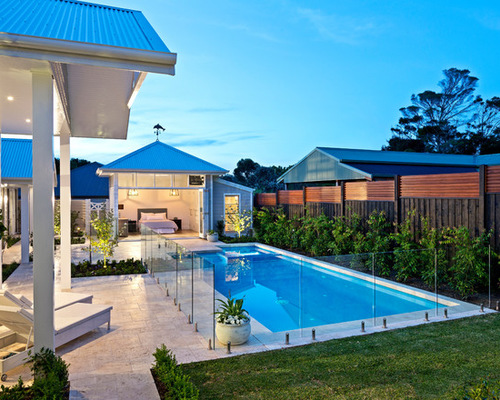
Get your pool inspected regularly
You should have your pool inspected at least once a year by a licensed pool inspector, Pollack says, to ensure that drain covers are functioning properly and that lights in the pool aren’t posing any danger of electrical shock, which can lead to death by electrocution.
There have been 60 electrocutions and nearly 50 serious shocks in and around swimming pools since 1990, according to the CPSC. Some have occurred during attempted rescues because the rescuer didn’t know about the electrical hazards. Wet surfaces such as grass or pool decks can even cause electrocution.
Pool equipment (pumps, filters, vacuums), lights, power or extension cords, overhead power lines, electrical outlets, radios, stereos and TVs are all sources of electricity around pools and spas, according to the CPSC.
If you’re in a swimming pool, signs that you’re experiencing an electrical shock include feeling a tingling sensation, experiencing muscle cramps or not being able to move. If you’re supervising swimmers, you may see unsettled or panicked behavior by others in the water, one or more motionless swimmers, or underwater lights not working properly, such as flickering or on when they shouldn’t be.
If you think you’re being shocked, the CPSC recommends that you move away from the source of the shock. Get out of the water but avoid using a metal ladder if one is present.
If you think someone is experiencing a shock, immediately turn off all power. Call or have someone call 911. The American Red Cross says you can also use a fiberglass shepherd’s rescue hook. For more information on electric shocks in swimming pools, you can review this safety guide from the CPSC.
Learn CPR
Knowing what to do should you find an unresponsive child or adult in a swimming pool or spa can be a life-or-death scenario. And while CPR generally is a good skill to have, if you’re a pool or spa owner, it’s vital. It’s another layer you can implement in addition to barriers, covers and alarms to help save a life. “You don’t know which method is going to work until it does,” Pollack says.
Originally published by Houzz, written by Mitchell Parker











